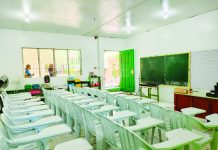PARENTS and students are facing uncertainty as school year 2020 approaches, and their apprehension is understandable since the number of active cases of COVID-19 in the country has spiked instead of flattening.
While the blended learning program being proposed by the Department of Education (DepEd) will somehow reduce the risk of coronavirus infection among children, the lack of clear guidelines on how it will be implemented is a valid concern.
DepEd should consider that a great number of students, especially children from poor and disadvantaged families, have limited access to gadgets and stable internet connection. Unless such problems are immediately resolved, we fear it may result to further marginalization and disenfranchisement of children’s right to education.
After the almost three months of community quarantine with most breadwinners living on a “no work, no pay” basis, majority of families are struggling to make ends meet and the proposed online distance learning entails additional burden and expenses for them. The government should provide computers for students and teachers. At the same time, it should address the weak internet connectivity in both urban and rural areas. It should also ensure the timely distribution of printed modules and monitoring sheets among students with due consideration for the safety and welfare of teachers.
This one needs stressing, too: the provision of necessary benefits and hazard pay for teachers who will be tasked to physically report to work or conduct home visitations. Health check-ups for both teachers and students involved in face-to-face learning should also be done regularly to ensure against COVID infection.
Aside from the lack of access to resources, the proposed blended learning does not also guarantee quality of education. It will be a great challenge for both teachers and students, especially those who are lacking digital literacy, to adapt to the new modalities of teaching and learning. Parents will also take an important role in guiding their children so they should also be well oriented about the distance learning program.
More importantly, there should be a regular monitoring mechanism to assess its impact as well as to identify the gaps for proper resolution.





